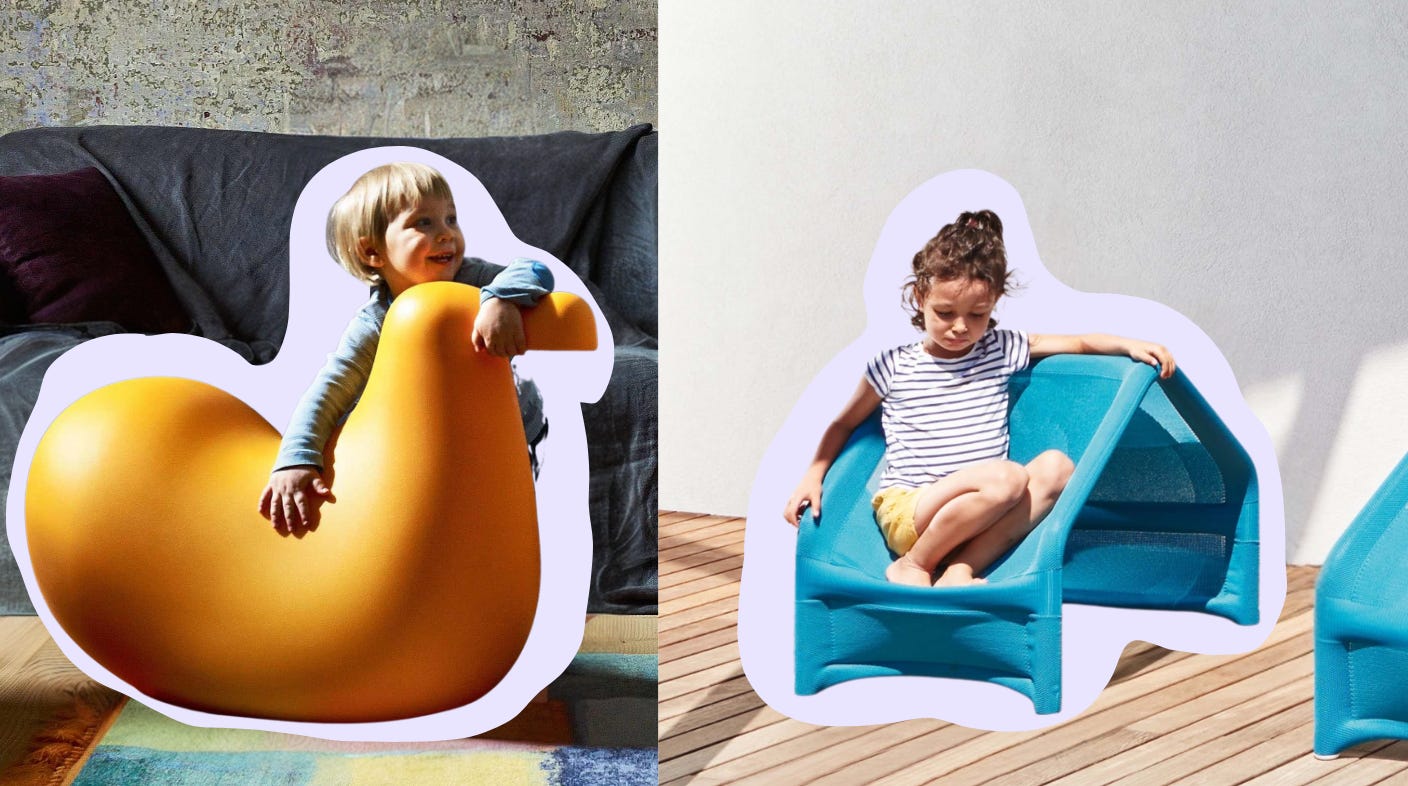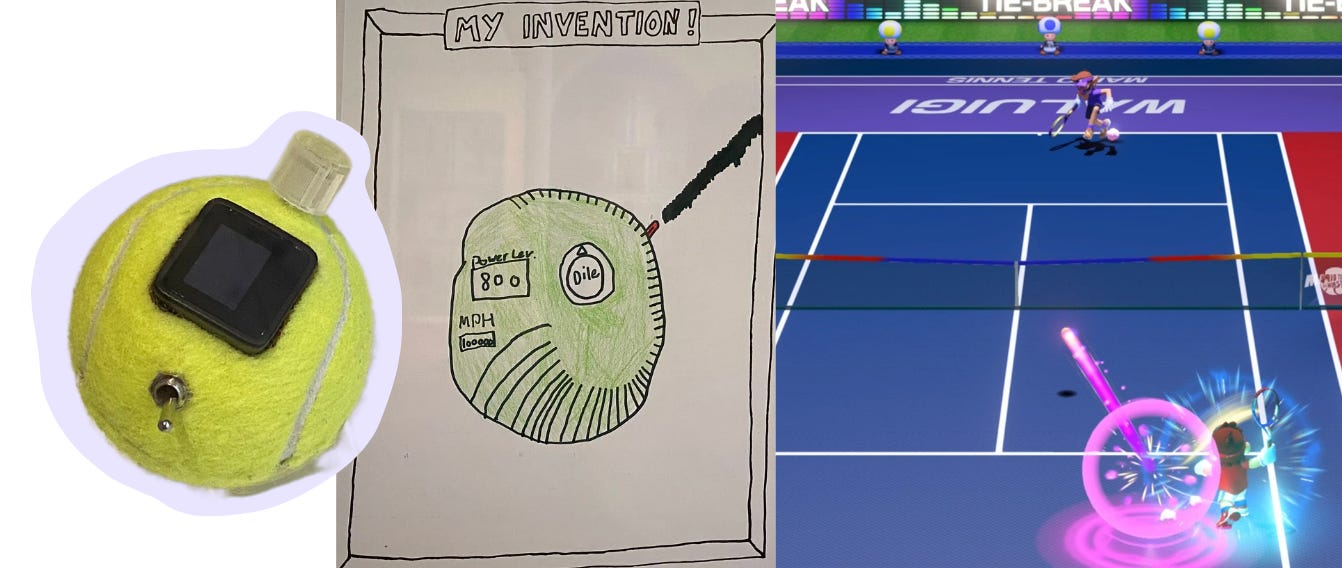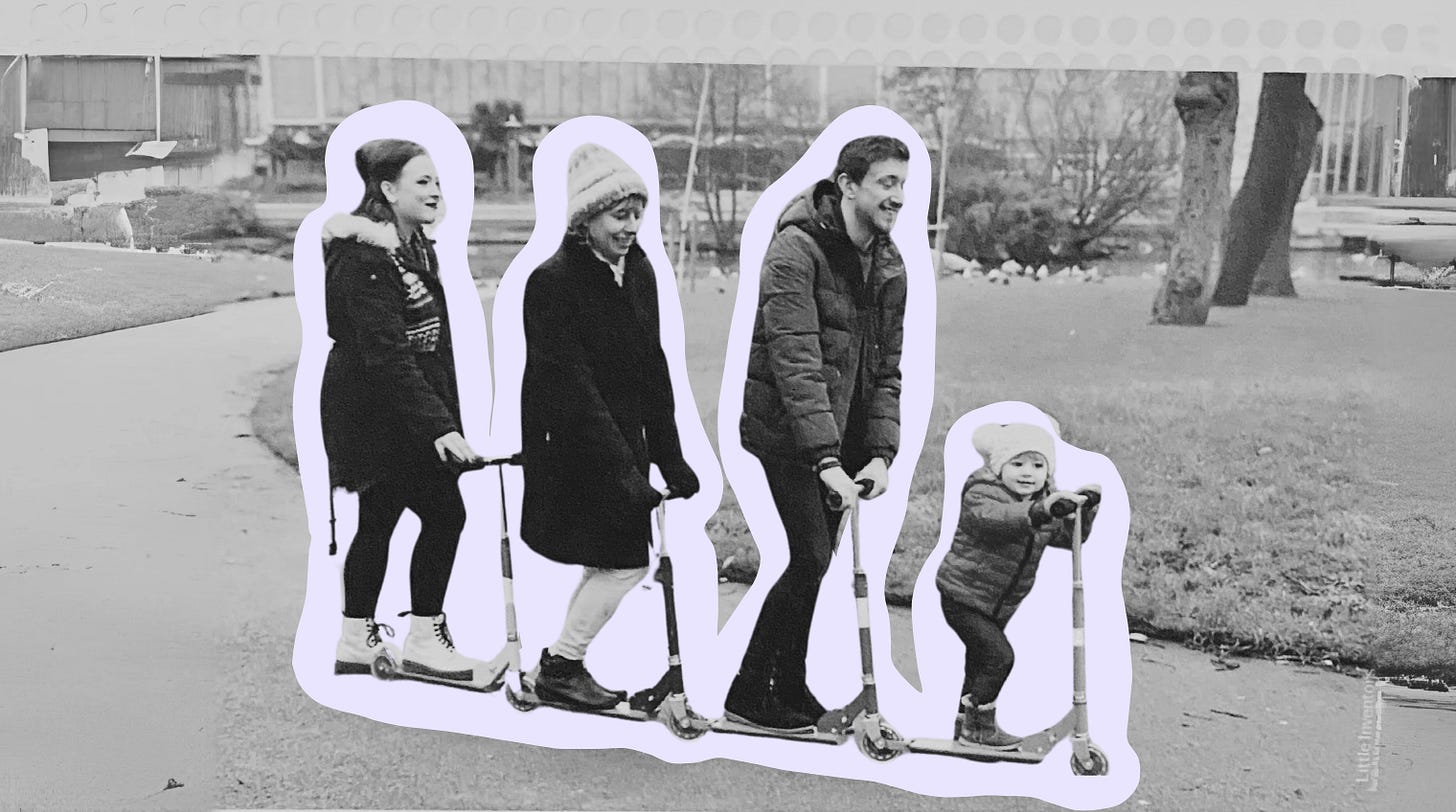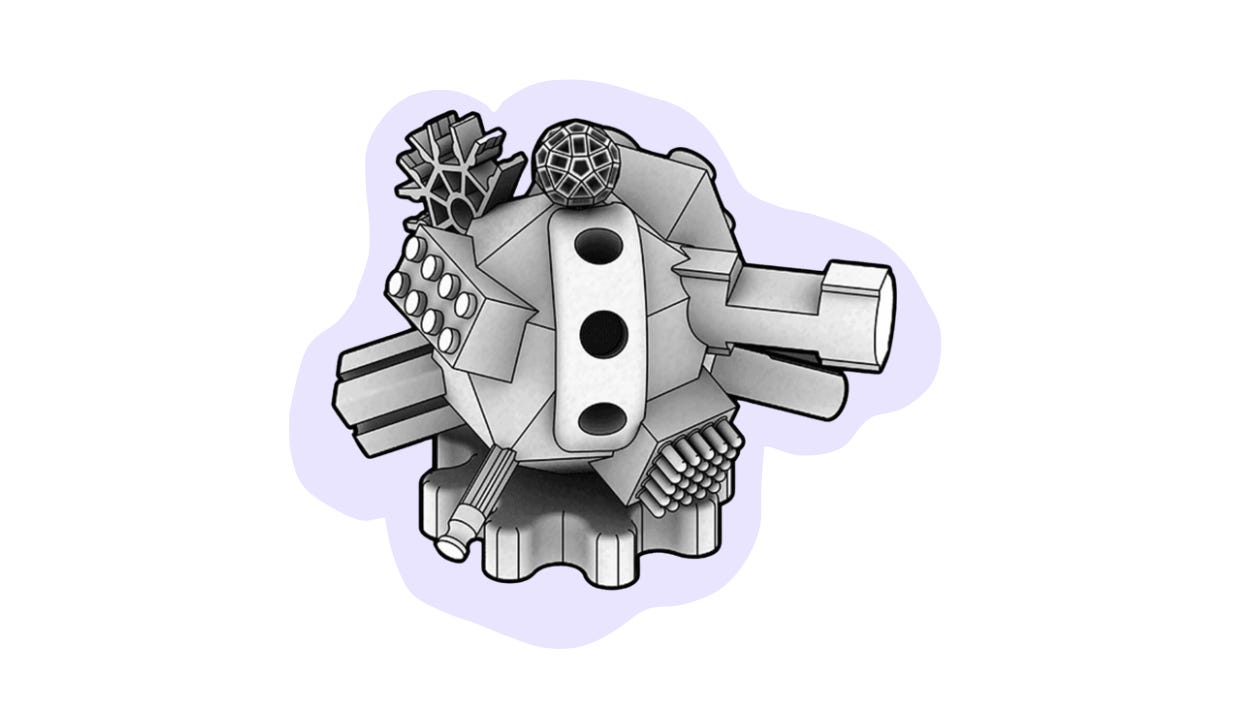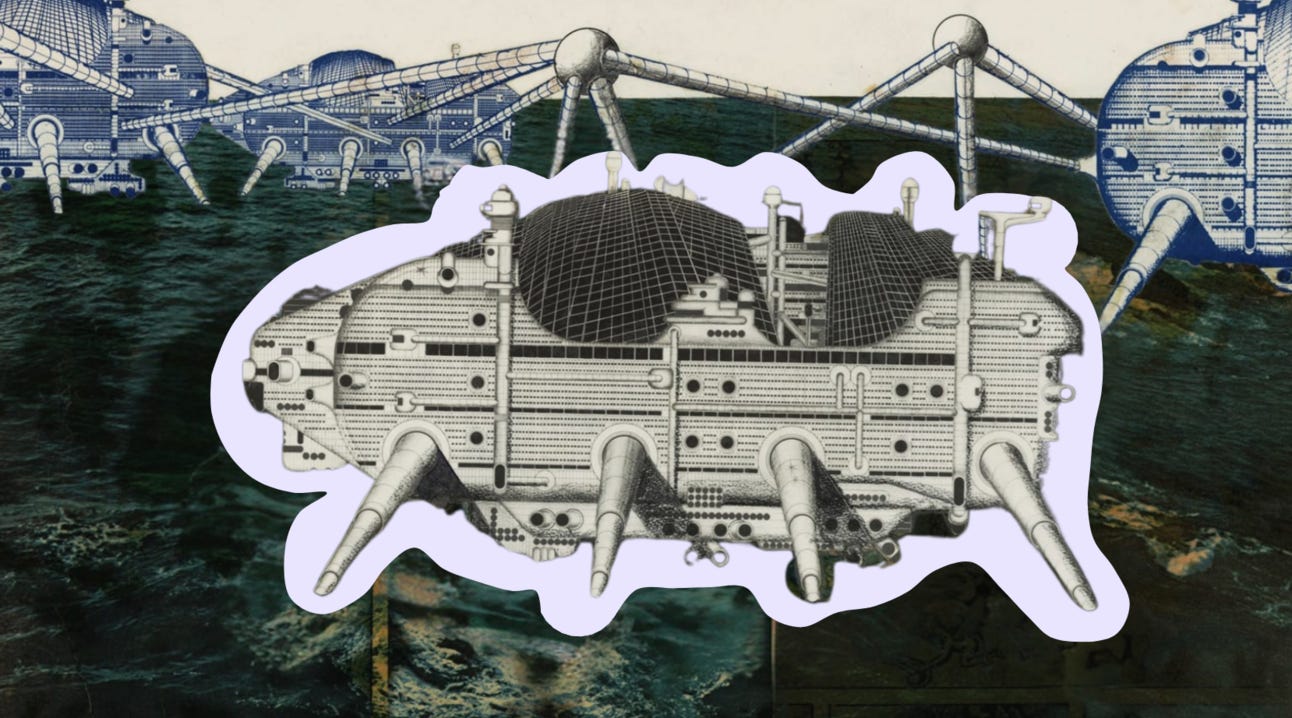What this children's museum taught me about designing with AI
Gathering research notes on AI, play, and speculative futures.
Little ones gift us many important lessons. Like, the correct technique for unicorn prancing, how to be a good friend and all the lyrics to Moana (what a bop).
Last month I spent an afternoon wandering around the London Young V&A museum. It was stacked with inspiration on designing AI to be more playful, useful, and enjoyable; here are some lessons that stood out.
Lesson 1. Break the rules
Image a chair. Perhaps you’re sitting on one now. Now imagine a chair for children. Did it look like this yellow ducky thing? Or this house structure that you can sit on and crawl under?
Children are not just smaller adults. Designing for kids isn't about scaling down adult products. A chair for a child may not look like a chair at all. It may rock and roll. Feel squishy or look like a familiar pet. We need to embrace innovative, playful, and engaging designs that meet them where they are.
AI is the same. AI forces us to question the fundamental principles of chairs product design. This means designing for generative AI is not just about slapping a chatbot on your website. The new interfaces for AI are still undefined, and leveraging the strengths of AI is hard to do when we’re stuck sitting on the same chair.
Idea spark: Rule Reversal Exercise Identify a set of "rules" that govern your current design practice (e.g., "Chairs must have four legs"). Choose one rule at a time and reverse it (e.g., "Chairs must not have legs"). Explore design possibilites from this new ruleset.
Lesson 2. Make it fast fun
I firmly believe that speed isn’t all about pursuing efficiency and productivity. It can also be about pursuing play.
In the museum, a kid invented this supercharged tennis ball (which was then modeled by a designer). I imagine hitting this ball feels like hitting an Ace in Mario Tennis. With this in-game boost, if you hit the ball just right it hurtles down the court in a speedy streak.
In this design, the humans are still hitting the ball to each other, but it’s much, much harder [Seymour Papert calls this experience ‘hard fun’].
Today, AI is often synonymous with speed. But if we use AI to make everything fast at the expense of fun, I think the future looks pretty bleak. When thinking about where to apply AI to your user journey, don’t just look for ways to make the experience faster; also think about where the joy is, and how you can make the experience more playful (if you see good example of AI joy, please let me know!).
Idea spark: Put a stacks of palm cards next to your desk. This is your ‘booster’ button, you can hit it any time during the day when you feel like you need a booster. But, the challenge is you need to invent the booster each time. By the end of your day, you’ll of identified ways to make your workflow faster and hopefully, funner.
Lesson 3. Embrace friends and family
Children do not move through the world on their own (neither do Grownups, for that matter). Instead, they exist in family units, in classes, in sporting communities, in book clubs…
…and sometimes they want to scoot together (on scooters like this one, designed by a kid at the museum).
When designing AI for children we need to consider the community they’re in; the presence of siblings with their voice agents, their teachers when evaluating progress and parents when setting safety preferences. How can they scoot together?
Idea spark: Persona Plus Map: We can use this lesson when designing for grown ups too. Identify the dyads around your ‘user’. Is it their manager? Co-worker? A co-worker they like, or one they have friction with? Is it their romantic partner? How would your product change if you had to design for both of these users?
Lesson 4. Play nicely with others
In the future, AI agents will have to work together, just like humans do. Or animals when they swarm.
Right now though, products don’t play nicely with each other; there’s poor interoperability. Kids toys have the same problem: duplo, lego, konnext…don’t play nicely with each other. But this free universal connection kit created an adaptor for kids toys to connect together.
This is a future I’m inspired by.
Idea spark: take a zoomed out view of your products user journey. Where is your user coming from when they get to your product? Where are they going? What do they use alongside your product and how can you make that gap easier to bridge.
Lesson 5. Help communities adapt
AI moves quickly. When technology moves quickly, without our participation, it can feel like technology is being done to us, rather than for/with us. And people aren’t always in the position to quickly pivot their lives.
Employees are urged to re-skill whilst still paying off university debt. Teachers rallied to reinvent education, whilst managing a class of 25 and administering standardised tests. Rather than pressuring individuals to adopt, how can we support communities to adapt? And is this sociotechnical challenge the responsibility of us as designers, technologists and researchers?
Architect Ron Herron from Archigram imagined a city designed to adapt. These speculative cities could disassemble, relocate, and reassemble based on environmental changes.
Whilst highly impractical, a bit spooky, and probably very wet, I think it serves as a reminder that we need to think differently about safe, nourishing tech transitions; and that designers have a role to play in supporting change.
Idea spark: Try a resource like the Moral IT pack, or ask the ‘death star’ question to think more broadly about the impact of the technology you’re building, how to mitigate risk and support safe change.
Lesson 6. Design for growing up
Kids grow up, quickly! In the space of 12 months, the difference between ages 2-3 is immense.
Just like kids, products can grow up and change alongside humans; like this chair that works for all ages. Or like this clothing company, Petit Pli, where the clothes expands as the child moves and grows.
But the growing doesn’t end when we become an adult. Our tools need to be built to flex and accomodate individual growth. In fact, they should encourage it.
Idea spark: Past and Future Archetypes: start with an arthecype of your users, then re-design them 5 years ago, and 5 years in the future. Will they be using the product the same way? How can your product serve them at each stage?
So take a seat at the kids table…
I believe that it’s in our interests as grown-up designers, to take a seat at the kids table. Working with kids is full of inspiration, innovation and lessons on how to design more compassionate, playful and humane technology.
This month I started to carve out more time for this kind of work. Alongside my work at Canva, I’ve started a PhD to explore child-centric AI; to identify what’s important to children and families and what they can teach us about a more playful future.
If you don’t already, subscribe to my newsletter to follow along with monthly musings! Or share with a like-minded friend.




